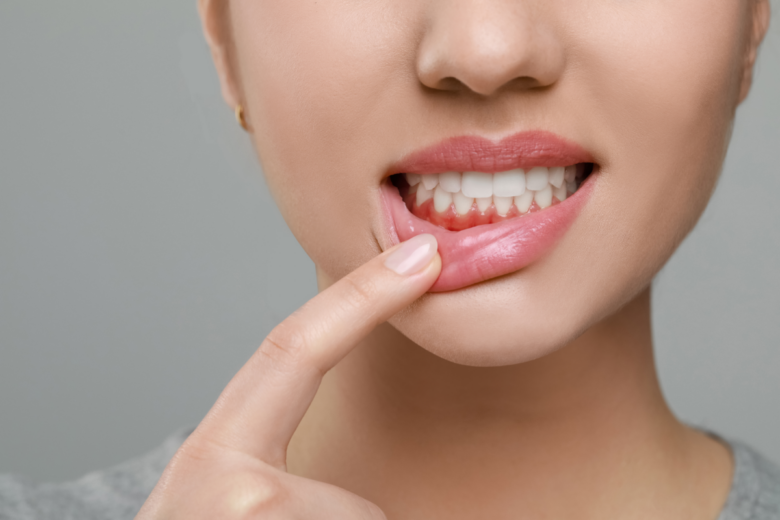The field of dentistry has undergone remarkable advancements over the years, with technology playing a pivotal role in transforming traditional procedures into more efficient, precise, and patient-friendly solutions. Among these innovations, laser technology stands out as a game-changer, particularly in gum surgeries.
Laser-assisted gingival surgery has redefined how dentists approach various gum-related issues, offering a minimally invasive alternative to conventional surgical techniques. From treating periodontal diseases to reshaping gum lines for aesthetic purposes, lasers have introduced a new era of precision and comfort in dental care.
This revolution isn’t just about improving clinical outcomes; it’s also about enhancing the patient experience. Procedures that once involved significant discomfort, prolonged recovery times, and potential complications are now quicker, less painful, and promote faster healing. Moreover, the versatility of laser technology allows dentists to customize treatments to meet the specific needs of each patient, ensuring optimal results.
As we delve into the role of laser in gingival surgery, this article will explore its mechanisms, benefits, and applications, providing a comprehensive understanding of why this technology is transforming modern dentistry.
Dentistry is not just about treating oral health issues; it’s also about providing patients with advanced, effective, and less intimidating solutions. The introduction of cutting-edge technology has opened doors to innovative approaches that prioritize precision, comfort, and efficiency. Among these, laser technology has emerged as a groundbreaking tool, particularly in the realm of gum surgeries.
For decades, conventional gum surgeries relied heavily on scalpels and sutures, often causing discomfort and requiring extended recovery times. The advent of laser-assisted techniques has changed this narrative, offering a revolutionary alternative that minimizes invasiveness while maximizing effectiveness. This paradigm shift is a testament to how technology is reshaping the patient experience, making dental procedures more approachable and accessible.
In this context, laser-assisted gingival surgery exemplifies the synergy between technological innovation and patient-centered care. Whether addressing complex periodontal diseases or enhancing smiles through gum contouring, lasers provide an unparalleled level of precision and adaptability. These advancements mark a significant milestone in dental care, ensuring that treatments are not only successful but also aligned with the evolving expectations of patients.
This article will delve deeper into the transformative role of laser technology in gingival surgery, highlighting its mechanisms, key advantages, and wide-ranging applications. Join us as we explore how this innovation is redefining the landscape of modern dentistry and elevating standards of care.
What Is Laser in Gingival Surgery?
Laser in gingival surgery refers to the use of focused light energy to treat or reshape gum tissues with minimal discomfort and high precision. Lasers emit concentrated beams of light that interact with soft tissues, allowing dentists to cut, vaporize, or coagulate gum tissues without the need for traditional surgical tools like scalpels. Different types of lasers, such as diode, CO2, and erbium lasers, are used depending on the procedure and tissue type, ensuring tailored solutions for each case.
How Does Laser Work in Gingival Surgery?
The functionality of lasers in gingival surgery lies in their ability to target specific tissues with controlled energy. The wavelength of the laser determines its interaction with water, hemoglobin, and melanin in the gum tissues. This selective targeting ensures that the laser effectively treats the problem area while sparing surrounding healthy tissues. Lasers are capable of precise incisions, sterilization of the surgical site, and simultaneous coagulation, which reduces bleeding and enhances healing.
Key Benefits of Using Laser in Gingival Surgery
- Pain Reduction: Laser procedures often require little to no anesthesia due to their minimally invasive nature.
- Faster Healing: The reduced trauma to tissues speeds up recovery times.
- Improved Precision: Lasers allow for unparalleled accuracy, minimizing damage to adjacent tissues.
- Reduced Risk of Infection: The laser’s sterilizing properties lower the likelihood of postoperative infections.
- Minimal Bleeding: Coagulation during the procedure helps control bleeding, improving visibility for the dentist and comfort for the patient.
Clinical Indications for Using Laser in Gingivectomies
Laser is an excellent choice for a variety of gingival surgeries, including:
- Treating periodontal diseases by removing infected tissues and sterilizing pockets.
- Reshaping gum lines to correct gummy smiles or improve aesthetic appearance.
- Performing frenectomies and crown lengthening procedures.
- Treating oral lesions such as aphthous ulcers and fibromas.
These applications highlight the versatility and reliability of laser technology in modern dentistry.
Laser vs. Traditional Techniques in Gingival Surgery
Traditional methods involve scalpels, sutures, and extended recovery periods. In contrast, laser surgery offers:
- Enhanced Comfort: Procedures are less painful and anxiety-inducing for patients.
- Quicker Recovery: Minimal trauma leads to shorter healing times.
- Reduced Complications: The sterilization and precision of lasers reduce the chances of infections and excessive bleeding.
While traditional techniques still have their place in certain complex cases, lasers are quickly becoming the preferred option for most gingival surgeries.
Postoperative Care for Gingival Surgeries with Laser
Postoperative care is crucial for optimal recovery. Patients are advised to:
- Maintain good oral hygiene while avoiding harsh brushing near the treated area.
- Follow a soft diet for a few days to prevent irritation.
- Use prescribed rinses or medications to support healing.
- Attend follow-up appointments to monitor progress and address concerns.
These simple yet effective practices ensure faster healing and minimize complications.
Limitations and Contraindications of Laser in Gingival Surgery
Despite its many advantages, laser surgery is not suitable for every situation. Limitations include:
- Ineffectiveness in treating hard tissues, such as teeth or bone.
- Higher costs compared to conventional methods.
- Potential for thermal damage if not performed by an experienced professional.
Contraindications may include patients with specific health conditions or those who require procedures unsuitable for laser technology.
The Future of Laser in Dentistry and Gingival Surgeries
The future of laser in dentistry looks promising, with ongoing innovations enhancing its efficiency and accessibility. Emerging technologies aim to improve wavelength customization, portability, and affordability, making laser procedures more widespread. Additionally, as patient demand for minimally invasive treatments grows, lasers are set to play an even more integral role in modern dental practices.
These advancements underscore the importance of lasers in transforming how dentists approach gingival surgeries, benefiting both practitioners and patients alike.
The Importance of Laser in the Evolution of Dentistry
Laser technology has undeniably revolutionized the field of dentistry, particularly in gingival surgeries. By offering a minimally invasive, precise, and efficient alternative to traditional surgical methods, lasers have significantly enhanced both clinical outcomes and patient experiences. Procedures that once involved discomfort, prolonged healing, and higher risks of complications are now more accessible, faster, and less intimidating for patients.
The integration of laser technology into dental practices reflects the broader evolution of dentistry—one that prioritizes patient-centered care, advanced techniques, and continuous innovation. As lasers become more versatile and affordable, their role in dentistry will only grow, paving the way for more personalized and effective treatments.
For patients, laser-assisted gingival surgeries mean less pain, quicker recovery, and improved results. For dental professionals, lasers provide a powerful tool to address a range of gum issues with unparalleled precision and ease. This symbiotic benefit makes lasers an essential component of modern dentistry.
As we look to the future, the potential for further advancements in laser technology is immense. From refined wavelengths to broader applications, lasers are poised to transform not only gingival surgeries but the entire landscape of oral healthcare. This technology exemplifies how innovation can elevate standards, creating a win-win for patients and practitioners alike.
In conclusion, the role of laser technology in the evolution of dentistry is nothing short of transformative. It has redefined how dental professionals approach gum-related procedures, elevating precision, comfort, and efficiency. What was once a field characterized by invasive surgeries with long recovery times has now embraced a more refined, patient-friendly approach, making dental care less daunting and more effective for everyone involved.
Laser-assisted gingival surgeries are a clear reflection of dentistry’s ongoing journey toward innovation. The precision offered by lasers not only enhances clinical outcomes but also ensures a more comfortable and quicker recovery for patients. This progression aligns with the growing emphasis on personalized, less invasive treatments that focus on the patient’s well-being.
As technology continues to advance, the future of laser dentistry looks incredibly promising. With ongoing improvements in laser systems, we can expect even more diverse applications, making treatments faster, safer, and more affordable. For both patients and dental professionals, the continued integration of lasers into everyday practice will undoubtedly enhance the overall quality of dental care, setting the stage for a new era in oral health.




